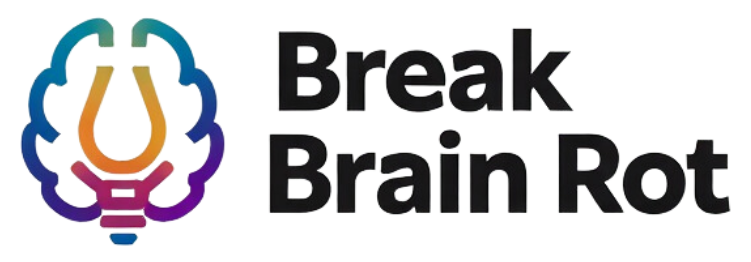Doomscrolling has become a modern digital habit, with studies showing that 62% of adults admit to compulsively scrolling through negative news on their devices daily. But have you ever wondered how this seemingly innocent behavior affects your brain, focus, and mood? Doomscrolling—endless consumption of distressing content—might feel unavoidable, but the toll it takes on your mental health is significant. So, how does the brain respond to doomscrolling and why is it so harmful to your mood and concentration? In this article, we’ll uncover how doomscrolling impacts your brain, the psychological and emotional strains it causes, and actionable strategies you can implement to break free.
Table of Contents
- What Is Doomscrolling and Why Does It Feel Addictive?
- The Neurological Impact: How Your Brain Responds to Doomscrolling
- How Doomscrolling Disrupts Focus and Productivity
- The Emotional Toll: Why Doomscrolling Dampens Your Mood
- Tips to Curb Doomscrolling and Protect Your Mental Health
- FAQs
What Is Doomscrolling and Why Does It Feel Addictive?
Definition and Common Triggers
Doomscrolling refers to the compulsive act of scrolling through endless streams of negative news or distressing content on digital platforms. It often stems from a negativity bias, our psychological tendency to focus more on bad news than good. Events like global crises, economic downturns, or natural disasters are common triggers that draw us into this cycle.
Humans are hardwired to prioritize potential threats, making it hard to turn away from upsetting headlines. This survival mechanism, once beneficial in the wild, now keeps us glued to our screens in the digital age.
The Role of Social Media Algorithms
Social media platforms amplify doomscrolling through personalized algorithms. These algorithms prioritize content that grabs your attention, often highlighting sensational or negative news. A study on social media algorithms reveals that these systems are designed to engage users longer, creating a feedback loop where distressing content dominates your feed, encouraging frequent scrolling.
FOMO (Fear of Missing Out) and the Doomscrolling Cycle
FOMO, or the fear of missing out, exacerbates doomscrolling. Many people worry they might miss critical updates on world events or social issues, perpetuating the habit of constant checking. This creates a toxic cycle where anxiety drives continued media consumption, further feeding negative emotions.
The Neurological Impact: How Your Brain Responds to Doomscrolling
The Role of the Amygdala in Anxiety and Stress
The brain response to doomscrolling begins with the amygdala, the part of the brain responsible for regulating fear and emotions. Doomscrolling activates the amygdala continuously, keeping your body in a state of heightened anxiety or “fight-or-flight” mode. This constant stress response leads to spikes in cortisol, the stress hormone, which can have long-term mental and physical health consequences.
Dopamine and the Reward System
Doomscrolling also exploits your brain’s reward system. Each new negative headline triggers a dopamine release, giving you a paradoxical sense of reward. The unpredictability of what you’ll see next creates a “variable reward” loop, similar to how slot machines work. Despite feeling stressed, this mechanism keeps you scrolling.
Check out this resource on the neuroscience of technology addiction to learn more about dopamine’s role in digital behaviors.
Impact on Prefrontal Cortex and Decision-Making
Excessive doomscrolling weakens the prefrontal cortex, the area of the brain responsible for executive functions like decision-making and focus. This diminishes your ability to concentrate, making it harder to disengage from the habit or focus on essential daily tasks.
How Doomscrolling Disrupts Focus and Productivity
Cognitive Overload and the Depletion of Mental Resources
Constant exposure to negative news leads to cognitive overload, where your brain is overwhelmed by too much information. This reduces your ability to process new information effectively and drains the mental energy needed for decision-making and problem-solving. Contrary to popular belief, multitasking only worsens the problem, especially when doomscrolling interferes with work or family time.
Explore how distractions affect productivity to understand why multitasking is a myth.
The Rise of “Digital Fog”
Many doomscrollers report experiencing “digital fog,” a sense of mental fatigue caused by prolonged screen time. This fog often manifests as difficulty staying focused, poor productivity, and a crushing sense of inertia. By exhausting your mental resources, doomscrolling creates a vicious cycle of digital fatigue and decreased concentration.
The Emotional Toll: Why Doomscrolling Dampens Your Mood
The Link Between Negative Content and Emotional Well-being
Prolonged exposure to negative, fear-inducing content can exacerbate feelings of helplessness, sadness, and even depression. Research shows a strong correlation between consistent consumption of bad news and increased levels of anxiety. Studies like this one from Medical News Today reveal how media consumption directly impacts mental health.
Doomscrolling and Sleep Disruption
Doomscrolling at night can disrupt your sleep cycle by increasing stress and activating your brain’s alertness. This delays the release of melatonin, the hormone responsible for sleep, resulting in restless nights. Sleep deprivation, in turn, heightens emotional instability, creating a negative feedback loop of poor mood and increased anxiety.
Tips to Curb Doomscrolling and Protect Your Mental Health
Practical Steps for Breaking the Cycle
Combat doomscrolling with simple yet effective strategies like setting screen time limits, disabling notifications, or using website blockers to restrict access to distressing websites. For a complete guide, check out these digital detox techniques.
Mindfulness and Conscious Media Consumption
Incorporating mindfulness practices like meditation and conscious breathing can help you develop better awareness of your scrolling habits. These techniques strengthen your prefrontal cortex, promoting mental clarity and focus.
Seeking Positive and Balanced Information
Shift your content balance by diversifying what you read. Include positive or uplifting articles alongside news to break the cycle of negativity. Subscribing to curated newsletters with balanced perspectives might also help you stay informed without becoming overwhelmed.
Frequently Asked Questions
What is the brain’s response to doomscrolling, and why does it feel addictive?
The brain responds to doomscrolling by activating the amygdala, leading to heightened stress while dopamine creates an addictive reward loop that keeps you scrolling.
How does doomscrolling negatively impact concentration and productivity in daily life?
It depletes cognitive resources, overstimulates emotional centers, and disrupts decision-making processes in the prefrontal cortex, reducing focus and productivity.
What are the long-term mental health effects of chronic doomscrolling?
Chronic doomscrolling can contribute to anxiety, depression, sleep disorders, and overall cognitive decline, taking a significant toll on mental well-being.
Conclusion
Doomscrolling may feel like a harmless habit, but the brain response to doomscrolling reveals its hidden dangers. From impaired focus to emotional exhaustion, compulsive scrolling can disrupt your life in profound ways. By understanding how your brain interacts with this behavior and taking proactive steps to break the cycle, you can protect your mental health, improve your mood, and regain control of your focus. Start today by prioritizing mindful scrolling habits and staying balanced in your digital consumption—your brain will thank you.


I very delighted to find this internet site on bing, just what I was searching for as well saved to fav
This was beautiful Admin. Thank you for your reflections.
This was beautiful Admin. Thank you for your reflections.